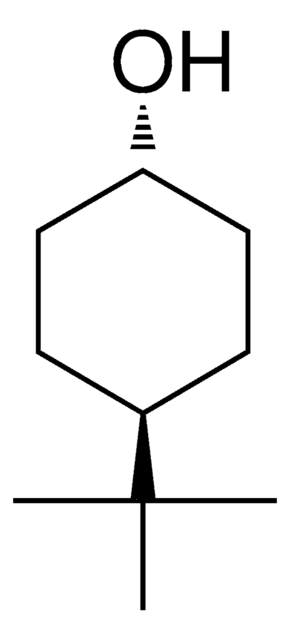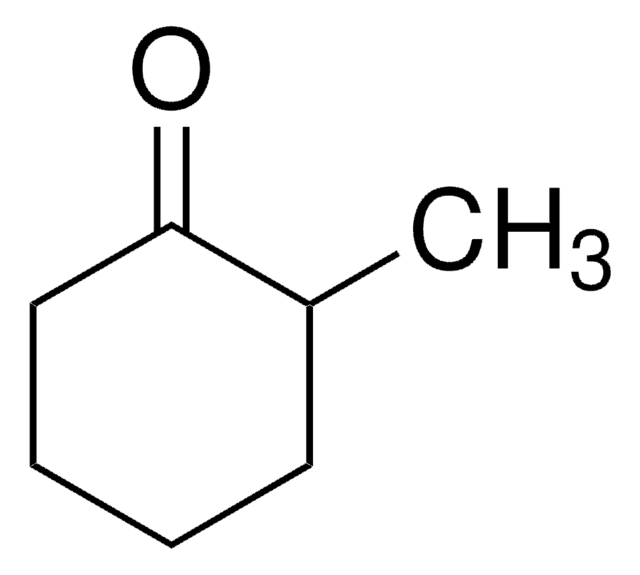B92303
4-tert-Butylcyclohexanone
99%
Synonym(s):
4-(1,1-Dimethylethyl)cyclohexanone, 4-tert-Butylcyclohexanone, p-tert-Butylcyclohexanone
Sign Into View Organizational & Contract Pricing
All Photos(1)
About This Item
Linear Formula:
(CH3)3CC6H9(=O)
CAS Number:
Molecular Weight:
154.25
Beilstein:
507309
EC Number:
MDL number:
UNSPSC Code:
12352100
PubChem Substance ID:
NACRES:
NA.22
Recommended Products
Assay
99%
form
crystals
bp
113-116 °C/20 mmHg (lit.)
mp
47-50 °C (lit.)
SMILES string
CC(C)(C)C1CCC(=O)CC1
InChI
1S/C10H18O/c1-10(2,3)8-4-6-9(11)7-5-8/h8H,4-7H2,1-3H3
InChI key
YKFKEYKJGVSEIX-UHFFFAOYSA-N
Looking for similar products? Visit Product Comparison Guide
Related Categories
Signal Word
Warning
Hazard Statements
Precautionary Statements
Hazard Classifications
Acute Tox. 4 Oral - Aquatic Chronic 3
Storage Class Code
11 - Combustible Solids
WGK
WGK 2
Flash Point(F)
204.8 °F - closed cup
Flash Point(C)
96 °C - closed cup
Personal Protective Equipment
dust mask type N95 (US), Eyeshields, Gloves
Choose from one of the most recent versions:
Already Own This Product?
Find documentation for the products that you have recently purchased in the Document Library.
Customers Also Viewed
Zhenlan Fang et al.
Angewandte Chemie (International ed. in English), 54(25), 7234-7254 (2015-06-04)
Defect engineering in metal-organic frameworks (MOFs) is an exciting concept for tailoring material properties, which opens up novel opportunities not only in sorption and catalysis, but also in controlling more challenging physical characteristics such as band gap as well as
Andrew F M Johnstone et al.
Toxicology in vitro : an international journal published in association with BIBRA, 69, 104989-104989 (2020-09-04)
The Hard-Soft Acid and Base hypothesis can be used to predict the potential bio-reactivity (electrophilicity) of a chemical with intracellular proteins, resulting in neurotoxicity. Twelve chemicals predicted to be neurotoxic were evaluated in vitro in rat dorsal root ganglia (DRG)
Selvedin Telalović et al.
Chemistry (Weinheim an der Bergstrasse, Germany), 17(7), 2077-2088 (2011-01-25)
Bimetallic three-dimensional amorphous mesoporous materials, Al-Zr-TUD-1 materials, were synthesised by using a surfactant-free, one-pot procedure employing triethanolamine (TEA) as a complexing reagent. The amount of aluminium and zirconium was varied in order to study the effect of these metals on
Our team of scientists has experience in all areas of research including Life Science, Material Science, Chemical Synthesis, Chromatography, Analytical and many others.
Contact Technical Service







